Snow & Spire: Flights to Winter in the North Cascade Range
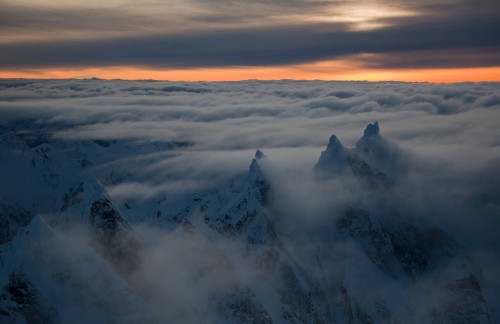
EVENT INFO:
Join North Cascades Institute for a book release celebration for John Scurlock’s Snow & Spire: Flights to Winter in the North Cascade Range. November 30, 2011 7-9 pm. Skagit Station Meeting Room, 105 E. Kincaid St, Mt Vernon. Free!
John Scurlock makes his living working as a paramedic for the Bellingham Fire Department, but finds his soulful calling soaring high above the North Cascades in a small yellow aircraft that he built with his own hands. Flying in all varieties of unpredictable weather above the raggedy peaks and yawning glaciers of our American Alps, he leans out the window, does his best to focus his digital camera and snaps photos.
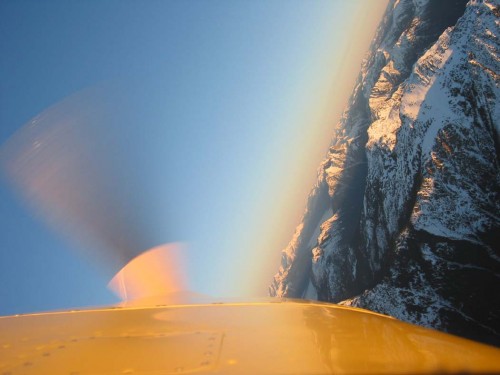
The results reveal a vast landscape buried in snow and encrusted in ice, a wintery terra incognito of terrifying beauty and austere grace: the frost-bound North Face of Mt. Triumph, impossible cornices on Cloudcap Peak, fire lookouts encased in rime, the Pickett Range hidden in mist, Mount Baker’s shining snowfields, Ripsaw Ridge and Skagit Queen Creek and Park Creek Pass in snowy, silent repose. This is the terrain that holds the world’s record for most snowfall ever recorded in a single winter, and Scurlock’s photography unveils the artistic potential of this seldom-seen northern range: something primitive, forbidden and inaccessible, yet also profoundly and exquisitely beautiful, according to Scurlock.
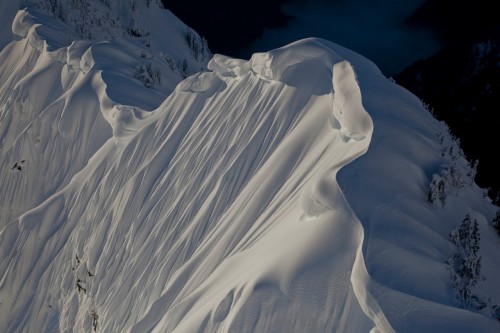 Cornices on the Southeast Ridge of Cloudcap Peak
Cornices on the Southeast Ridge of Cloudcap Peak
Scurlock’s first book, a coffee-table-sized collection of his aerial photography, is being published this month by Wolverine Publishing in Colorado. Snow & Spire: Flights to Winter in the North Cascade Range represents a culmination of several years of determined labor and features stunning reproductions of his body of work, plus essays by geologist David Tucker and mountaineering historian Lowell Skoog. A display copy in the window of Winthrop’s bookstore has attracted more walk-in traffic than they can remember for any other book, and the initial print run of a few thousand seems destined to sell-out as word spreads through Scurlock’s networks of climbers, nature photographers, NPS and USFS staff, pilots, naturalists and other friends.
Having observed the progress of his ambitious project over the past five years, I had the opportunity to ask Scurlock a few questions on the eve of publication of Snow & Spire.
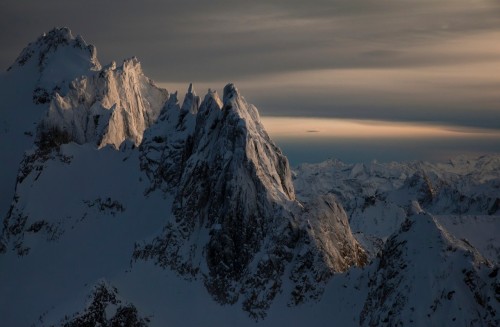 The West Peak of Silver Star Mountain and the Wine Spires at Sunset
The West Peak of Silver Star Mountain and the Wine Spires at Sunset
Christian Martin: When did you first start photographing the North Cascades from the air?
John Scurlock: My first aerial photographs of the North Cascades were in the 1990s when I flew up there in a Cessna with a friend, looking at routes in the southern Picket range for a possible traverse. But my first digital aerial images were in early 2002, when I began photographing Mount Baker and got connected with Dr. Kevin Scott at the USGS/Cascades Volcano Observatory. That led to my meeting with his associate and friend, Dave Tucker from Bellingham. We’ve collaborated extensively since then, with me supporting their research into the geologic and volcanic history of Baker. I started photographing the rest of the range in winter after I observed the winter mountains while flying above and around Baker. Because of my familiarity with the North Cascades through climbing, I knew I was seeing the mountains in a condition that was really unknown, and I knew photographs of the range in winter either were very limited or didn’t exist. That led me eventually to my great obsession.
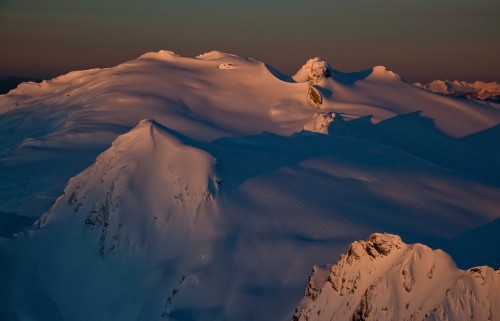 Bacon Peak at Sunrise from the Northeast
Bacon Peak at Sunrise from the Northeast
CM: What were the outlines of your obsession?
JS: Well, I was familiar with the range from climbing and hiking in the summer, but I realized at the outset that seeing the mountains in winter was an incredibly altered condition from what I was used to. I marveled at their stunning beauty after this snowy transformation. I knew I was seeing things that no one else had ever seen or photographed, and that led to my determination to somehow photograph the entire range from the air during the winter. I didn’t dive right in however, but rather gradually expanded my boundaries as I gained experience. At this point, I am fairly satisfied that’s I’ve flown into every nook and cranny of these mountains during winter.
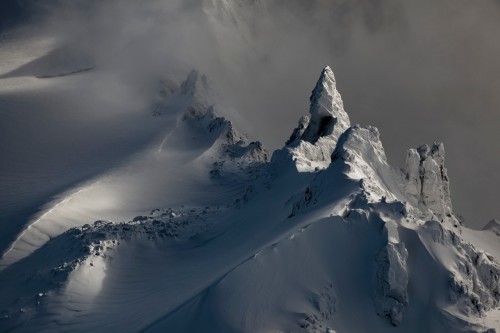 The Fingers of Fury
The Fingers of Fury
CM: When did you begin flying?
JS: I had always wanted to fly, since childhood. I had thought that nearsightedness disqualified me, until I found out in my 30s that I could still be a pilot, though not professionally. After getting my pilot’s license, I wanted to own a plane, like all pilots dream of. It was suggested that I could build a better plane than I could buy, and so after some investigation, I started in on my plane, a kit called an RV6 from Van’s Aircraft. It took nine years to build, as I traveled, hiked, and skied extensively during that time. It’s a small, 26-foot, two-seat tail-wheel plane of conventional construction. It’s very versatile, with a fast cruising speed, good handling at slow speeds, generally docile, and a service ceiling of more than 20,000 feet. The design has stood the test of time, and it has proven to be a really great airplane.
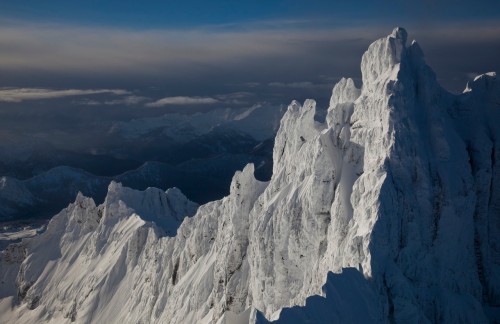 Lincoln Peak, looking to the Southwest
Lincoln Peak, looking to the Southwest
CM: What is your goal in photographing the North Cascades and sharing these photographs?
JS: My goal with all my photography, and this book in particular, is to share the amazing beauty of the North Cascades in winter, from every aspect and angle. I’ve been enormously privileged to see things that are nearly incomprehensible in their wildness and wonderful aesthetics. I’ve been so fortunate to be in the position to photograph what I’ve seen and share those images with everyone else. Photography is the means to accomplish this; digital photography, a great airplane, and obsession are the driving forces, and not a day goes by that I don’t remember how fortunate I’ve been in this endeavor.


Thanks for sharing that obsession with those of us that love this place! Hope to see you at the event and if not, find the book locally. It is truly a remarkable book.